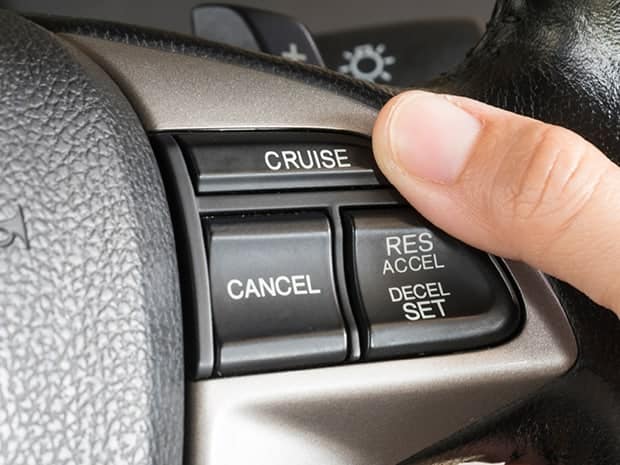Table Of Content

Don’t let yourself become complacent just because the car is doing most of the work for you. It works best at higher speeds on highways or freeways with minimal curves or turns. Overall, distracted driving—AKA human error—is responsible for most vehicle accidents in the United States. And of the primary vehicle accident causes, equipment failure related to braking and steering problems is most common. Car manufacturers are continuously working to improve the equipment and technology, of course.
Navigating Through Different Weather Conditions
Cruise control has come a long way since first invented and patented by Ralph Teetor in 1950, who originally named it the “Speedostat”. Chrysler Corporation was the first manufacturer to offer the groundbreaking mechanism as an option on several of its luxury vehicle models nine years later. Today, cruise control is rapidly becoming the standard on all new vehicles, providing drivers with increased convenience on their daily drive. If drivers find themselves in serious accidents while using cruise control, they should contact an experienced injury lawyer as soon as possible.
How To Check If You Have A Clean Driving Record

Sometimes, cruise control disengages automatically when the vehicle’s automatic wipers detect heavy rainfall, or when a wheel spins or (briefly) leaves the surface of the road after a big bump or dip. In other situations, there may be a problem with one or more sensors or switches, including the brake pedal switch, throttle position sensor, or one or more wheel speed sensors. By keeping a steady distance from other cars, we reduce the risk of collisions in fluctuating traffic flow. ACC also provides comfort on long drives by reducing the need to manually adjust speed. Fuel efficiency is another plus; since ACC works to avoid unnecessary acceleration and braking, it often results in better gas mileage.
Wet or Icy Conditions

Cruise control does not damage the engine or transmission of the vehicle in any way. Additionally, having cruise control while driving winding roads or during inclement weather, where you may need to slow down frequently, is dangerous. Cruise control has become an essential practice for many drivers today, but unfortunately, it is not available in every vehicle.
Safe and Efficient Operation of Cruise Control
This reduces fuel consumption while ensuring smooth operation of your vehicle. In addition, avoid using cruise control on slippery surfaces such as ice or wet roads. Cruise control, also known as speed control, is an electronic system that allows you to maintain a specific speed without manually controlling the accelerator pedal. The system uses sensors and electronic components to control the throttle and keep your car moving at a desired speed. First introduced in the late 1950s, cruise control has since become a standard feature in most modern vehicles you see on the road today.
Choosing the Right Wiring Kit for Your Car Amplifier Installation
Edmunds notes that moisture can potentially interfere with the car’s sensors and make cruise control systems less reliable. However, when cruise control is being used, that transfer of weight doesn’t happen because the speed doesn’t change while your foot is taken off the gas pedal. Without the need to keep their feet on the pedals, drivers can easily change positions safely and be more comfortable while driving. Drivers with arthritis or foot pain find relaxing their feet on the car’s floor much less strenuous.
[9] Using cruise control on the highway makes your driving more predictable to other drivers. Instead of constantly changing speeds, cars know how fast you’re driving and can follow safely behind you or pass. The invention of cruise control can be traced back to the late 1940s and early 1950s, when engineer Ralph Teetor developed the first-speed control system. This innovative feature was designed to help drivers maintain a steady speed, reduce fatigue while driving, and improve fuel efficiency. Over the years, cruise control technology has undergone significant advancements, leading to the development of sophisticated systems like adaptive cruise control. If it’s rainy, snowing, or roads are otherwise slippery, such as if there’s ice or wet leaves on the road, cruise control is not recommended.
One time when I was giving my step father’s dad a ride home I was using cruise control on the highway and the road surface was somewhat wet. As I was driving there were two distinct times where my back wheels lost grip to the surface of the road and started spinning uncontrollably. Even if it is not raining it’s still not a good idea to use your cruise control on wet roads.
Ask A Trooper: Do not use cruise control on snowy roads - Austin Daily Herald - Austin Daily Herald
Ask A Trooper: Do not use cruise control on snowy roads - Austin Daily Herald.
Posted: Tue, 22 Feb 2022 08:00:00 GMT [source]
However, adaptive cruise control may not work well in bad weather or protect you from sudden movements, so you will want to always keep your full attention on the road. A speed limiter will limit how fast the driver can accelerate behind the wheel. All modern vehicles contain a standard speed limiter capping speed between 120 mph and 180 mph depending to protect the vehicle’s engine and discourage reckless driving. However, an additional limiter can be added as an option in many European-made cars, as well as Tesla, Ford, and Nissan.
If you’re even the least bit tired, you should never turn on cruise control. When cruise control is no longer needed, or you need to quickly make a maneuver, simply apply pressure to the brakes to disengage the system. Once deactivated, you will be in full control of your vehicle once again. Does your car’s engine seem to have a mind of its own revving in park or neutral without you touching the accelerator? You may also be surprised to know that you shouldn’t use cruise control in a brand new car. To learn more about why you shouldn’t use cruise control in a brand new car click here.
Is it legal for L platers to use cruise control? - Western Advocate
Is it legal for L platers to use cruise control?.
Posted: Thu, 13 Jul 2023 07:00:00 GMT [source]
Before hitting the road again after resolving the issue, test your vehicle’s cruise control at low speeds first to ensure that everything is functioning correctly once more. At times, you may even notice adaptive technology causing problems of its own. The system may detect speed changes in a vehicle in the next lane, rather than the car in front of you, and apply the brakes for no reason. You can safely use cruise control in a handful of scenarios when the weather is ideal, and the road is straight. It’s better to skip the feature during stormy conditions or when your travel involves unpredictable road conditions. Deciding when should you use cruise control—and when it’s better not to—can be a challenge.
Lane-keeping assist systems serve as an additional layer of safety, ensuring that driver fatigue or distraction doesn’t lead to unintended lane departures. This technology uses cameras to monitor lane markings and provides steering corrections if the vehicle begins to drift. Understanding when to deactivate cruise control is as important as knowing how to use it. In adverse weather conditions or on busy city streets, relinquishing control to automation can be risky. We should be ready to assume manual control to navigate through unexpected situations that technology may not reliably handle. It’s paramount we use cruise control judiciously, with an informed sense of when it enhances driving and when it might compromise our safety.

No comments:
Post a Comment